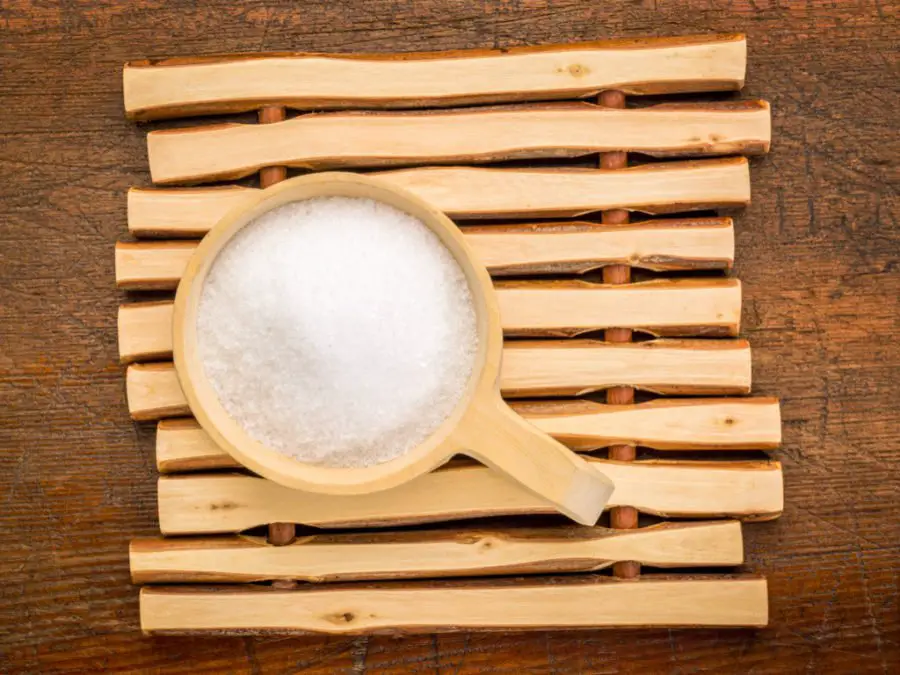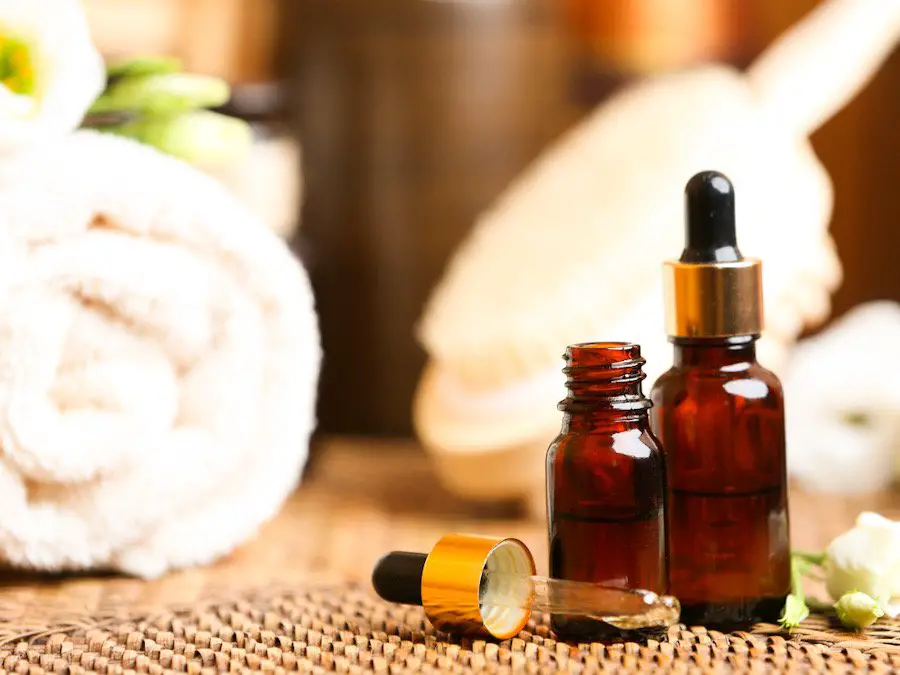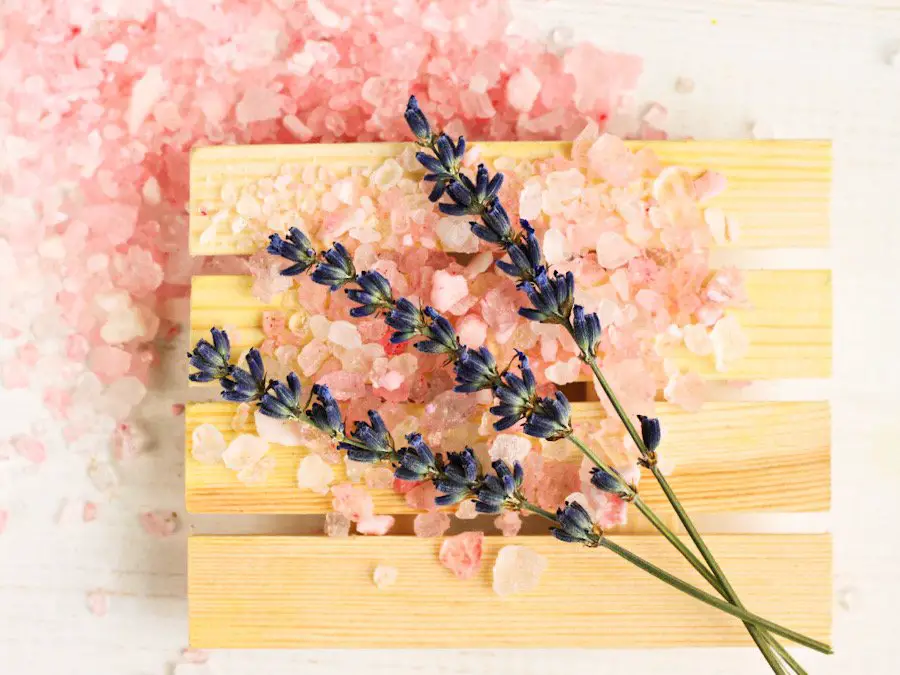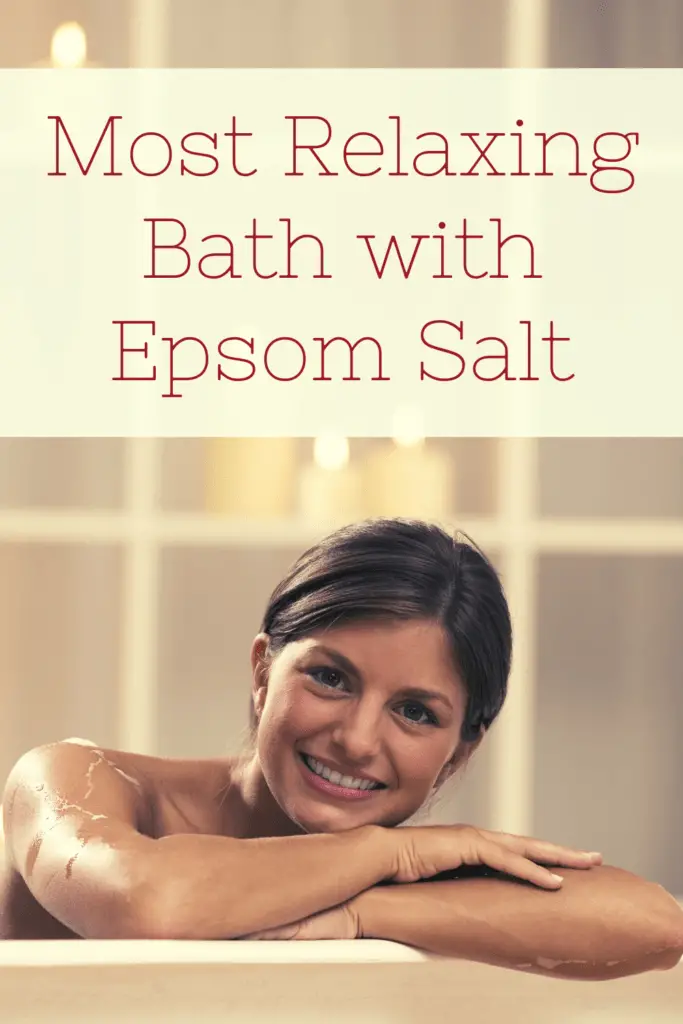Epsom salt baths are mentioned fairly frequently in conversation. However, if you’ve never taken one before, you may not be sure why people do so or even how to do it.
A relaxing bath with Epsom salt isn’t all that different from bathing in pure warm water.
All you need to do is add some of the Epsom salt to the warm water, wait for it to dissolve, and then soak in the warm bath for approximately twenty minutes. Many people have found that doing this three times a week has a profound effect on their stress levels and ability to relax.
In this article, we’re going to take a much deeper look at how Epsom salt baths work to help people relax and tips for how you can get the most benefit from this time.
Table of Contents
The Benefits of a Relaxing Bath
Candlelight, soothing fragrances, and warm water make a great recipe for some relaxing downtime. Even without the bonuses, just soaking in warm water can be a great way to relax. But is it really helping, or is this just something people say? A lot of us haven’t taken baths since we were kids. If you haven’t made time to take many baths as an adult, you may wonder if it could be a waste of time.
According to studies, yes. Taking 20 or 30 minutes out of your day for a relaxing bath will greatly impact your health and is a good choice for self-care. Cleveland Clinic has said that a warm bath can improve your mental health, physical health, soothe aching muscles and joints, and can be a great activity to help you get ready for sleep.
What Is Epsom Salt?

Well, first of all, it’s not salt. The name is a misnomer. Epsom salts are crystals that look like salt but actually aren’t. It would be easy to mistake them for the real thing. However, you definitely won’t be consuming any with dinner.
Epsom salt is also known as magnesium sulfate. It was discovered in an English community called Epsom, hence the name. While they soon realized that eating it wasn’t a great idea, they discovered that soaking in it made their baths even more beneficial. Soon, they were selling Epsom salts around the world.
So why do we think that soaking in Epsom salt has so long been considered beneficial? It’s probably the benefits of magnesium.
What Happens During a Relaxing Bath With Epsom Salt
There haven’t been many studies to figure out why people report feeling the way they feel after an Epsom salt bath. At this point, we mostly have anecdotal evidence that an Epsom salt bath seems to be beneficial.
So why do we think people feel so great? We can make a few guesses.
Magenium is an essential mineral. We need it to live. It helps us with hundreds of essential functions in our bodies. Mostly, we eat it. If you wanted to eat more natural foods really rich in magnesium, you’d be picking up kale, collard greens, and pumpkin seeds.
If a doctor needed to give you a shot of magnesium at a hospital, they would likely be using magnesium sulfate. Yes, the same thing in Epsom salts, in a concentrated and medical-grade variety.
When you have a magnesium deficiency, a lot of things can happen. Symptoms include fatigue, muscle cramps, and in extreme situations, heart problems. It has also been found to have a strong link with an increase in stress and anxiety.
It is thought by many (though not proven) that the magnesium in an Epsom salt bath may soak into the skin and help relax muscles. Many wonder or speculate that perhaps the Epsom salts help relieve some anxiety symptoms through the absorption of magnesium.
Again, this is anecdotal speculation. What studies do know is that baths are helpful, Epsom salts aren’t harmful, and that with so many people reporting the Epsom salts make them feel better, it’s worth trying for yourself and seeing what you think.
A fun note is that Epsom salt baths make you more buoyant in the water. This adds an extra relaxing touch since you’ll feel light in the water.
A Closer Look at Stress Relief and Magnesium

If you’re wanting to know more about the links between stress relief and magnesium, you may want to talk to your doctor.
What we do know is that many studies have shown a strong link between stress levels, the central nervous system, and magnesium levels. We’ve learned that among its many responsibilities, magnesium regulates the body’s response to stress. This includes the physical stress of over-exertion and mental stress. When your body undergoes either of these types of stress long-term, your body becomes low on magnesium, and the low levels work to intensify the feelings of stress. It becomes a terrible cycle that wreaks havoc on your system.
To this end, studies have found that managing your magnesium levels can reduce anxiety symptoms, ease stress, and make it easier for you to manage your responses to feelings like fear and stress signals.
If you have questions about your magnesium levels, it’s always best to talk to a doctor about this. While many adults today have magnesium deficiencies, it’s also possible to have too much, especially with supplements. Getting more information on your specific needs is always helpful.
With all of this information in mind, it’s easy to believe that soaking in magnesium sulfate may positively affect the stress in your muscles and improve the quality of your relaxing bath. Think of your Epsom salts as one more ingredient to a great bath time ritual, like candlelight or relaxing music.
Other Benefits of Epsom Salt Baths
We know that people find Epsom salt baths to be relaxing. We also know that the benefits of magnesium may be a contributing factor.
Advocates of Epsom salt baths have been using them for many different ailments over time. Many people feel that soaking in Epsom salt baths helps them reduce swelling and relieve aches and pains. It’s also been considered a great way to soothe skin. Many people use it to reduce itching, inflammation, and irritation in the skin.
People with chronic conditions are often recommended Epsom salt baths. These include fibromyalgia, arthritis, people with circulation issues, eczema, psoriasis, and other conditions.
How to Take a Relaxing Bath With Epsom Salt
Most people suggest adding two cups of Epsom salt to a standard-sized bathtub filled with warm water.
If you have an oversized tub, then use twice as much Epsom salt, so four cups.
Soak in the bath for twenty to thirty minutes.
While these are the numbers most people recommend, Mayo Clinic has actually suggested slightly different numbers. They suggest using two cups of Epsom salt per gallon of warm water. This is likely going to be a much higher concentration than most people do.
You’ll need to decide what feels right for you. If you use too much salt, it may dry out your skin. You can test to see what concentration levels work best for you but stay within this general range.
Note that it is suggested you use warm water instead of hot water. When you take a hot bath, you tend to dehydrate because you sweat more.
Are There Any Risks To An Epsom Salt Bath?
Do you have sensitive skin? A condition like eczema, maybe? Then it’s an excellent idea to mix some Epsom salt with water and rub that on a test patch of your skin. Wait a day after doing this test to see if your skin dries out or becomes irritated. Also, you may want to check out my article ‘Which Bubble Bath is Good for Eczema. This Is What Experts Say.‘
If, after you take an Epsom salt bath, you notice any skin troubles, like itchiness or an allergic reaction like hives or a rash, then stop taking Epsom salt baths.
If you have low blood pressure, you should talk to your doctor before taking up any relaxing bath habit. This isn’t about the Epsom salts but about the bath itself. When you’re soaking in hot water, you can temporarily lower your blood pressure. This is relaxing for many people, but a risk if you have low blood pressure.
How Often To Take an Epsom Salt Bath
You do not want an Epsom salt bath every day. In fact, you don’t want to take any kind of bath daily. Daily baths can dry out your skin. Epsom salt baths can make this worse. Instead, take an Epsom salt bath one to three times per week. If you’re trying to ease sore muscles or other specific issues, it’s recommended that you take Epsom salt baths three times a week for four weeks and then evaluate your results.
After every bath, make sure to moisturize your skin thoroughly.
An Epsom Salt Foot Bath

A lot of people with aching feet rely on Epsom salt foot baths to help ease their pains. Like with a full bath, you want to soak in warm water for about twenty minutes. When you’re done, pat the feet dry with a soft towel. Don’t rub the towel around, because that’s harsh on the skin. When dry, apply moisturizer.
If you’re just soaking your feet, use a tub with about a gallon of water and try the two cups of Epsom salt recommended by Mayo Clinic. If that doesn’t work for you, try one cup of Epsom salts per gallon and see what you think. Be aware that the salts may make the water, and therefore your feet, more slippery.
Can I Add Essential Oils to My Epsom Salt Bath?
You can add essential oils to your Epsom salt bath. In fact, a lot of people choose to make this part of their routine.
Some companies sell Epsom salt bath products that already have essential oils mixed in with them. You’ll want to read the ingredients carefully to know what you’re actually getting.

If you’re going to use pure essential oils you already have at home, always be mindful about the amount you’re mixing together. Putting essential oils directly on your skin is never safe. You need to dilute the mixture.
For an Epsom salt bath, try mixing five drops of pure essential oil with an ounce of coconut oil as your carrier oil. Then add this to the bathwater and mix it around. Add the Epsom salts and let those dissolve before you climb into the bathwater.
You can use whatever essential oils you have on hand and prefer. Many people enjoy lavender for their baths or rosehip oil. Chamomile can be nice, especially if you’re taking a bath before you go to bed.
By the way, you can add essential oils to your bubble bath as well. If you are interested, check out my article here.
Epsom Salt Baths Versus Bubble Baths
Are Epsom salt baths better than bubble baths?
Possibly.
Obviously, this comes back to your own personal preference. If you love bubble baths, find them relaxing, and have had great experiences over the years, then good for you! Stick with what works for you and makes you happy!
However, many people do consider Epsom salt baths to be superior in one key area. Bubble bath products are full of ingredients. Many of these ingredients are there to create bubbles and to make the water smell great. The trouble is that these are synthetic ingredients, and now you are soaking in them. With so many different ingredients in the water, it’s easy to see why this is considered harsher for the skin.
A lot of bubble bath ingredients like sulfates and phthalates break down the barriers on your skin. This dries out the skin and causes issues. If you already have a skin condition, like eczema or psoriasis, bubble baths can make it a lot worse.
Epsom salts can dry out the skin, particularly when overused by soaking too long or too often. However, you are only using one ingredient, and that ingredient also carries the benefits of magnesium.
Again, if you enjoy your bubble baths, you need to do what’s best for you. If you have concerns about dry skin or synthetic chemicals, you may prefer to try Epsom salt baths over bubble baths for your self-care time.
Maximizing the Benefits Of Your Relaxing Bath With Epsom Salt

Let’s get the most benefit from your twenty minutes of self-care time as possible. Here are a few more tips for how you can make this time special for you.
1. Shower Before Your Bath
This may seem excessive but is recommended by many experts. If you take a shower first, you’ve already done the work of getting clean. Now you’re going to soak specifically to relax.
2. Bring a Glass of Water With You
Ideally, you should drink a glass of water while you bathe. Afterward, you should drink another one. We don’t realize we’re sweating in the bath, since we’re in the water, but typically we are. This is a good time to get yourself properly hydrated.
3. Put Plants In Your Bathroom
If you’re going to make a habit of taking baths, put some plants that love humidity in your bathroom. This can give you a more fun and outdoor vibe. Succulents are a popular and low maintenance choice.
4. Remove Your Phone From the Room
Is it going to be easy to relax if you’re hearing notifications pop up? Probably not.
If you’re worried about letting important people get in touch during an emergency, like your kids, then put your phone on Do Not Disturb. There is a setting where your phone will still ring if someone calls twice within three minutes. Let the important people know about this if it’s important. Remember that you are enjoying a safe and distraction-free space is also important.
5. Put on Relaxing Music
Preferably, something that can fall easily into the background. You don’t want to be dancing to the Top 40 during your bath.
6. Snacks Are Allowed
Grapes and oranges are popular choices. You can even allow some of the orange juice to drip into the bathwater to soak up the scent.
7. Get a Headrest
This makes it so much easier to relax all your muscles.
8. Bring a Book or Meditate
Need an activity? Bring a book in the bath with you or meditate. Having a headrest can make this a lot easier.
9. Moisturize After
This has been mentioned a couple of times in this article, but it’s worth noting again. Having a strong moisturizing routine after your bath is going to make the experience a lot better. It may seem like an extra step at first, but it’s self-care at its best. You’ll feel great, and the effects will be long-lasting.
Remember To Savor This Time For Yourself
A relaxing bath with Epsom salt is a great self-care activity that relieves stress, releases muscle tension, and gives you some time to collect your thoughts. Do your best to be present in the moment. Using essential oils, reading a book, or listening to soothing music are all ways to help yourself be more present in the moment and take in the benefits of the time you’ve given yourself to truly relax.


